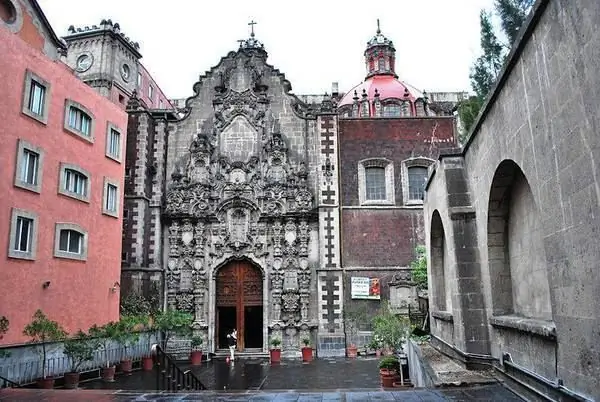
Description of the attraction
The Church of San Francisco, that is, St. Francis, is located in the historic center of Mexico City on Madero Street. Unfortunately, only this church remains from the once large monastery complex, which belonged to the Franciscans. The now destroyed monastery served as the residence of the first 12 Franciscan monks led by Martin de Valencia, who arrived in Mexico after receiving permission from the pontiff to missionary in the lands of the New World. At the beginning of the colonial period, the San Francisco monastery was one of the largest and most influential abbeys in Mexico. It was built on the site where the ruler of the Indians, Montezuma II, kept his zoo. In those days, the church and monastery were limited to the streets of Bolivar, Madero, Aye Central and Venustiano Carranza. The area of the monastery complex reached over 32 thousand square meters. m.
A cross was installed in the courtyard of the monastery, which, by all accounts, was larger than the tallest tower in Mexico City. It was made from a cypress tree felled in the Chapultepec forest, that is, to the west of the present Zocalo square.
The Church and Convent of San Francisco has witnessed many historical events in its time. Here they spent the last journey of Hernan Cortes, in 1629 the Marquis of Gelvez found refuge here after a quarrel with the archbishop, in 1692 Count Galve and his wife took refuge in the monastery from the rebels. The end of the Mexican War of Independence was celebrated in the monastery with a solemn prayer service.
After the war, as a result of reforms to transform the Mexican capital, the monastery of San Francisco, like many other churches and abbeys, was disbanded. Almost all of his property was confiscated by the city authorities. Most of the monastery complex was demolished for the construction of new roads. Some of the monastery buildings have been preserved, but currently do not belong to the Church. Only the Church of San Francisco is still active. This is the third temple to be built on this site. The first two sacred buildings were demolished due to landslides of the soil under them. The current building of the church was built in 1710-1716.
The entrance to the temple is through the Balvanera chapel, since the main portal is walled up. To get to the nave of the temple, you need to go down the stairs, which indicates that this building is gradually sinking into soft soil. The chapel's luxurious stucco facade was created in 1766. Many historians believe that the architect Lorenzo Rodriguez worked on it. The statues from the facade were removed when the chapel was for some time in the hands of the evangelists.






